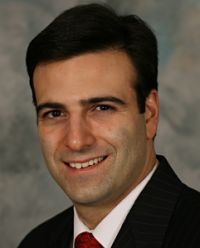Despite Reprieve, Money Funds Under Pressure
 Money-market funds (MMFs) may have fought off tighter rules for now, but regulators have a variety of options if they opt to continue the fight. Regardless of regulatory efforts, the age of money funds as havens for corporate cash may have passed.
Money-market funds (MMFs) may have fought off tighter rules for now, but regulators have a variety of options if they opt to continue the fight. Regardless of regulatory efforts, the age of money funds as havens for corporate cash may have passed.
Securities and Exchange Commission Chairman Mary Schapiro called off the commission’s vote on money fund reforms when it became clear there weren’t enough votes to pass it. The proposal aimed to stymie runs on money funds by requiring them to establish capital buffers and let their share prices float instead of being fixed at $1 per share.
Even if the SEC had voted in favor of the proposal, companies’ use of money funds appears to be waning. Ben Campbell, president and CEO of Capital Advisors Group, notes that the SEC’s Rule 2a-7 effectively reduces the weighted average maturity of money fund investments to 60 days, and in practice funds’ maturities are now under 50. That’s down from an average of 90 days prior to the financial crisis and 120 days before 1991, according to Campbell.
That puts money fund yields at the short end of the Treasury curve, at around just 0.1%.
“Our conclusion is that [treasury executives] are going to consider a wide variety of investment channels outside of traditional MMFs,” Campbell says.
He notes that a Capital Advisors survey in June shows treasurers anticipate shifting short-term investments, especially to government securities and also commercial paper and separate accounts. A third expect to decrease their use of demand deposit accounts, a move likely prompted by the expiration of the FDIC’s unlimited deposit insurance at the end of the year.
Even with the change in deposit insurance, however, banks’ demand deposit accounts (DDA) may prove attractive. David Neshat, treasurer at Cambridge, Mass.-based Akamai Technologies, a cloud platform provider with $1.2 billion in 2011 revenue, says his company keeps sufficient cash in a DDA at its cash management bank to satisfy its daily liquidity needs. The earnings credit rate (ECR) it receives to offset bank service charges “is today on a net basis higher than the return on any MMF out there,” Neshat says.
Akamai’s need for short-term liquidity closely matches the amount it must deposit to receive enough ECR to offset all of its banking fees; investment managers place its remaining cash in longer-term investments. If a company’s short-term liquidity needs exceed that “sweet spot,” money funds are the remaining option for investing cash that needs to be quickly available.
Had the SEC’s proposal been approved, that money-fund option likely would have become much less viable for treasurers, since a floating-rate net asset value introduces the risk of capital losses if the fund changes value. “After all, we are managing shareholders’ cash, and our first objective is to preserve principal,” Neshat says.
 The pendulum may swing in money funds’ favor when the unlimited FDIC insurance expires, but given DDA advantages, the pendulum may not swing that far. Neshat says companies are comfortable using DDAs, but as with money funds, will have to “look under the hood” of their cash management banks to verify their credit strength.
The pendulum may swing in money funds’ favor when the unlimited FDIC insurance expires, but given DDA advantages, the pendulum may not swing that far. Neshat says companies are comfortable using DDAs, but as with money funds, will have to “look under the hood” of their cash management banks to verify their credit strength.
Aron Chazen, co-founder of Treasury Curve, which offers a web-based platform accessing information and trading from multiple asset managers, notes that investing in a money fund requires only a single wire to execute the trade and one journal entry.
“What often gets lost is the fact that money funds are easy to invest in operationally, accounting-wise and from a tax perspective,” Chazen says, adding that “more than anything,” he’s heard companies talk about shifting money to bank time deposits, while those with the resources are evaluating commercial paper.
Of course, the Federal Reserve and the Treasury supported tighter rules for money funds, and they may pursue other avenues to rein in the $2.6 trillion MMF industry.
Heath Tarbert, a partner at the law firm of Weil Gotshal & Manges, pictured at left, says the Financial Stability Oversight Council (FSOC) established by Dodd-Frank could require the SEC to try again to impose rules. The FSOC could designate major money fund providers or the entire money fund industry as systemically important financial institutions, making them subject to additional rules and oversight.
The Fed could also limit banks’ ability to borrow from MMFs, reducing those risky holdings, and the Fed could require banks that run MMFs to hold more capital against them.
Tarbert says Title 8 of Dodd-Frank, which deals with clearing, settlement and processing, provides interesting alternative approaches. For example, the FSOC could designate activities that are critical to money funds’ operations as systemically important. “It’s conceivable FSOC could say there will be no payment clearing or settlement activity for any MMFs that do not have a floating NAV or a buffer in place,” he says.
Another section of Dodd-Frank potentially could be used to exempt money fund companies from being designated as systemically important if they adopt certain reforms, Tarbert adds. “You could use a carrot instead of a stick, saying, ‘We think stable value funds present systemic risk, but if you change to a floating NAV we won’t designate you as systemically important.’”
By john Hintze
https://www.treasuryandrisk.com/2012/08/28/despite-reprieve-money-funds-under-pressure